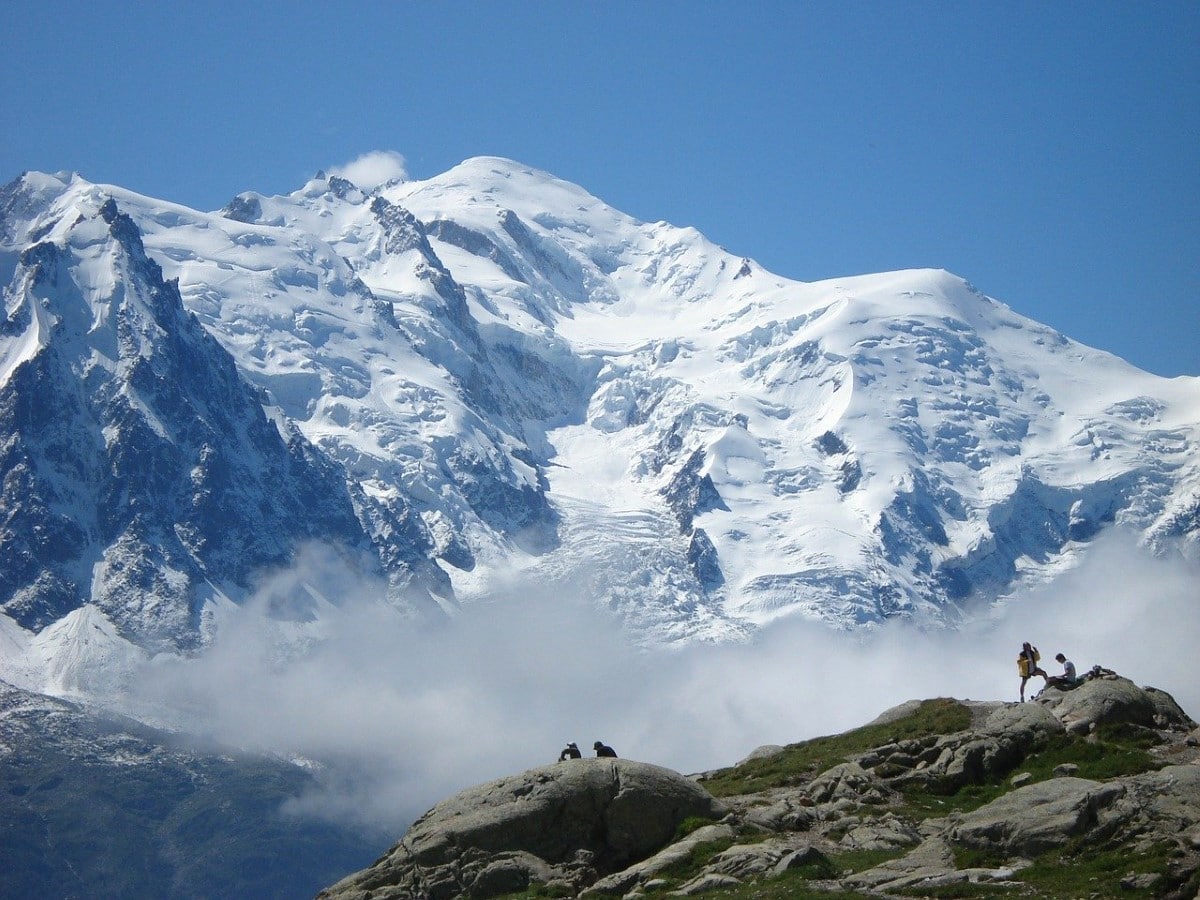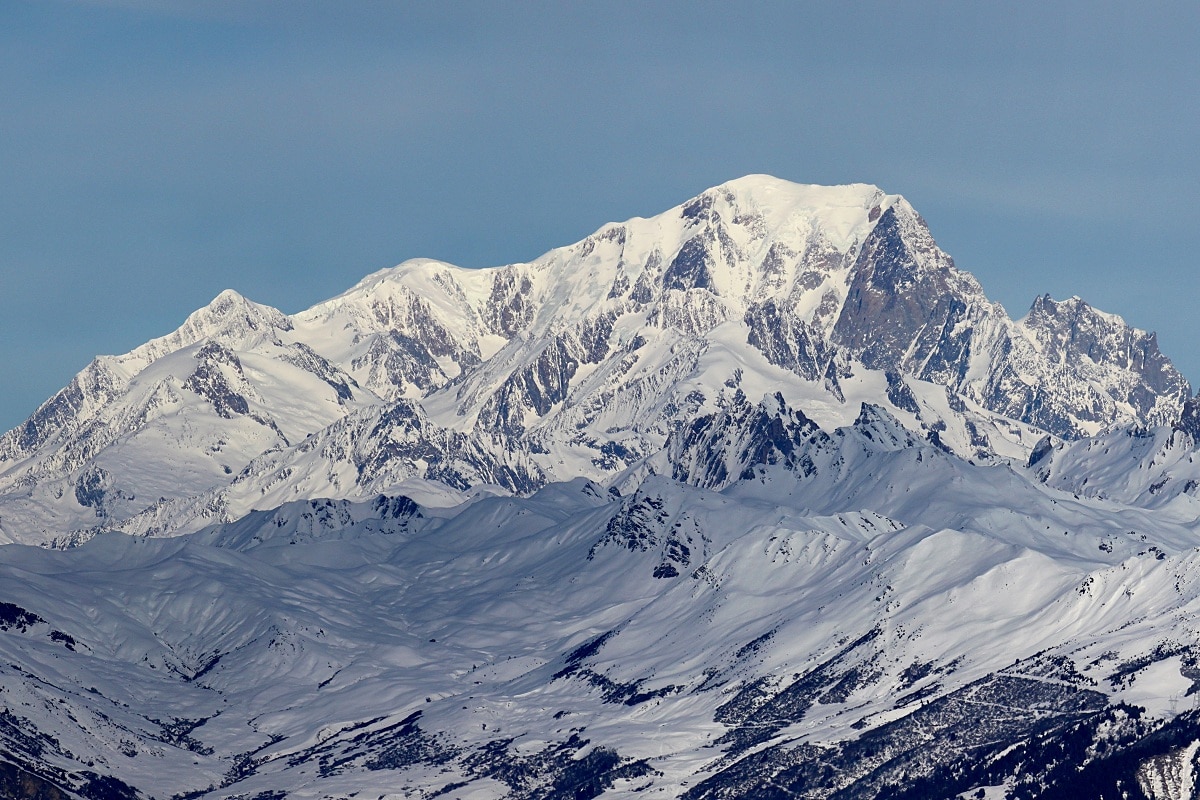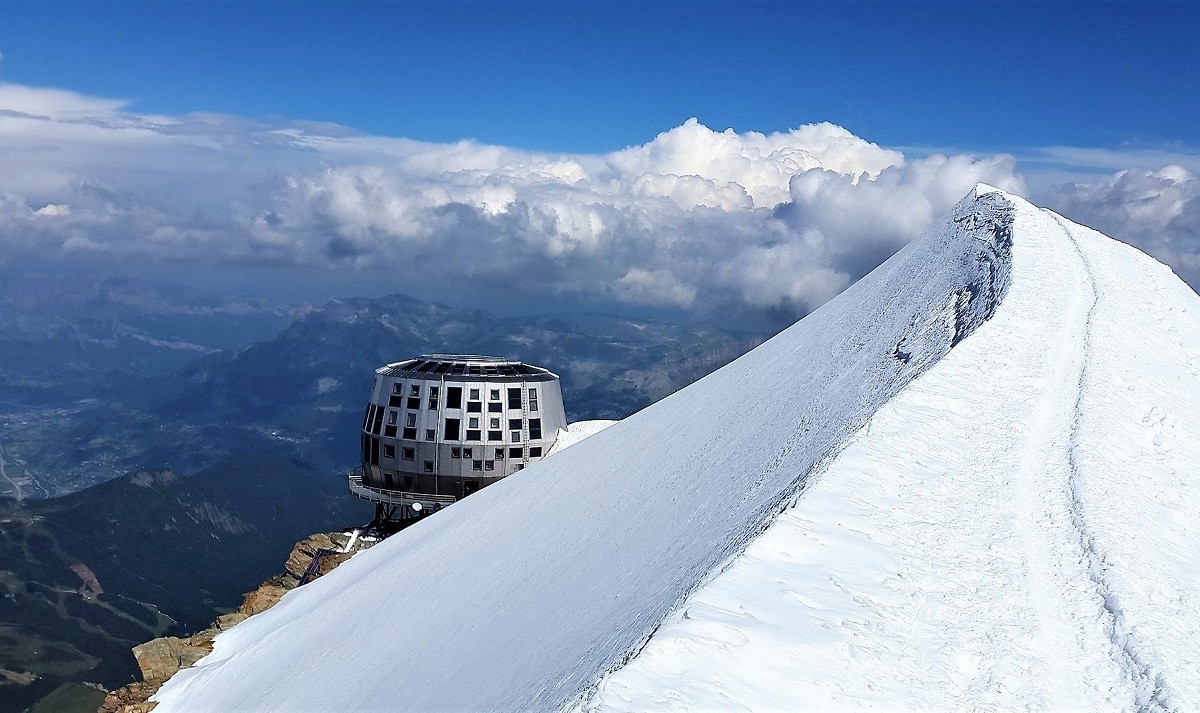
The highest peak in Western Europe and one of the best known in all the Alps is the Montblanc. It means white mountain in French and is located in the middle of a quite beautiful landscape in the west of the Caucasus and is a neighbor of many glaciers that feed all the rivers that are around. Being a mountain in high demand for mountaineers, it has become one of the most famous in the world.
Therefore, we are going to dedicate this article to tell you all the characteristics, geology and origin of Mont Blanc.
Key features

We know that mountaineering is a fairly common activity in the mountains. And it is that in Mont Blanc it is a very frequent activity. Especially during the summer months you see large numbers of climbers and mountaineers trying to reach the summit. The first to reach the peak were were Jacques Balmat and Michel Gabriel Pacard in 178626 years after the geologist and naturalist Horace-Bénédict de Saussure announced a hefty reward for anyone who succeeds. The intention of this geologist was to be able to calculate the maximum height of this peak. In order to do these studies, I needed a mountaineer to reach the top.
Mont Blanc is located along the border between France and Italy and west of the Caucasus Mountains. It belongs to the Alps mountain range and extends to Swiss territory. It has a peculiarity and that is that it has a pyramidal peak. The peak is located in southeastern France. The maximum height of the peak is 4809 meters above sea level. Therefore, it becomes a challenge for many mountaineers who try to reach its summit during the summer season.
As is to be expected, although it is summer the summit is covered with a layer of ice and snow. The thickness of said finish will vary according to the season. However, it has perennial ice. This makes the calculated height of the mountain not totally accurate. This occurs with quite a few peaks that are covered in snow. Throughout the Mont Blanc massif we find several peaks and one of the longest vertical slopes of the mountains that exist on the European continent. This vertical slope is more than 3.500 meters long.
Not only is it important for mountaineers and for the beauty of the landscapes, but there are also numerous valleys that are home to a large amount of flora and fauna on the slopes of the massif. There are several glaciers that have been eroding part of the slopes. The largest glacier is the Mer de Glace. It is the largest glacier in France and translates to sea of ice.
Mont Blanc formation

It is a mountain that has more than 300 million years old. However, the massive term to complete all its formation in its entirety approximately 15 million years ago. The structure is completely folded since its formation is due to the folding of the earth's crust due to the internal movements of the planet. Since the oceanic and continental plates have different entities at the end the displacement of one and the other makes them dry in these mountain ranges.
Back then, during the formation of Mont Blanc, Pangea was the only supercontinent. We are talking about the Paleozoic era. It is here that the supercontinent began to crack and eventually separated into various land masses. The processes that take place inside the planet did not stop at any time. It should be borne in mind that the mechanism of plate tectonics is still active today. Because of this, over the course of millions of years, movements continued to occur in the earth's crust that generated Mont Blanc.
Already at the end of cretaceous period, the Apulian plate and the Eurasian plate began to collide with each other. This collision of tectonic plates caused the crust of strata and sedimentary rocks to rise up in the form of folds. Mont Blanc is thought to it is nothing more than part of an igneous rock outcrop from an ancient seabed. The entire massif in its entirety was rising in height due to the pressure exerted by the African plate during the last 100 million years.
The crystalline basements were a type of rock that formed Mont Blanc. These basements were formed through the folding of the rock due to the pressure exerted by the tectonic plates. This caused the mountain to have a ridge ridge caused by the erosion of various types of glaciers. Overall, the visual shape of all this gave a flat shape reminiscent of a knife.
Flora and fauna of Mont Blanc

Although this mountain has a great beauty for having an icy aspect, it also has a nice contrast with the green fields that surround it. It is only necessary to see that in all the green fields there are many animal and plant species. Many of the species that visit the mountain range face the altitude, low temperatures and acidity of the soil. As you might expect, survival in this area is quite complex for the biodiversity that lives here. Nevertheless, adaptation and evolution have meant that all species can survive.
In spring and summer some species of flowering plants, grasses and other smaller plants grow on the lower part of the mountain. This lower part has somewhat more pleasant environmental conditions for the species. Around the massif we can find conifers such as firs and larches. Some species such as Ranunculus glacialis can survive up to 4.000 meters high.
As for the fauna, we see that it is represented by chamois, red deer, red foxes, sea specks, butterflies, golden eagle, moths and some species of spiders and scorpions. Not all of them live in the mountains as such, but some are capable of climbing to altitudes where there is only snow. They are altitudes at about 3.500 meters high.
I hope that with this information you can learn more about Mont Blanc and its characteristics.